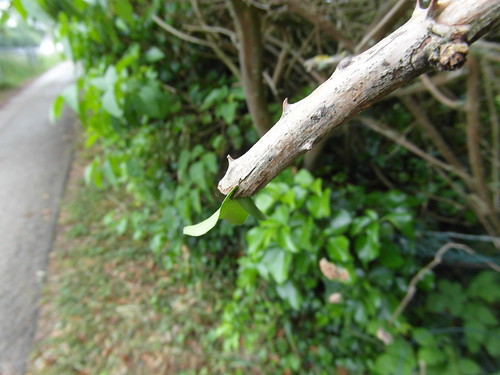Like many people, I've planted a few trees in my life. A sycamore, when I was a child, on the farm, in a place we needed a bit of water draw and shelter. A Spire Cherry and a Magnolia in a corner house that needed a bit of wow factor. Some hedgeable British natives (Elder, Hawthorn, Hazel, Holly, Field Maple etc.) in gardens that needed wildlife-friendly sheltering boundaries.
I'm hardly unique in this, lots of people enjoy planting trees, which is why I was a bit puzzled by the robot that plants trees. But then I started thinking about wildlife disturbance, about how often planted trees fail, about how volunteer humans might somewhat maximise the disadvantages of human-planted forests in terms of disturbance and inefficiency. Might there be a better and less disruptive way?
You'll want a slightly expanded view of the product at this point, and Interesting Engineering have a brief overview of the tree planting robot and its brush cutting chum. (Anyone thinking "ooh that sounds a great way to clear established native scrub and replace it with fast growing commercial wood product" quell your cynicism briefly please.)
There's also a video (yes that's a Facebook link) which you can leave running in the background as there's not much look at - just talking heads. But I am put in mind of a few things.
Firstly: a tale of two hedges I heard somewhere. The first was planted carefully by foresters, to give a good and careful mix of appropriate plants for the area, protected from deer and rabbits, fed through lean times and watered through dry patches and it grew into a fine and beautiful hedge. The second was created by a busy farmer. He hung a washing line between two trees, near to where there were some old trees growing; a scrappy hawthorn, an elder tree that had sprung up from somewhere, a rough old bird cherry and a hazel, where the squirrels would pick up their nuts for winter. All winter the birds that fed in the trees sat on the line as they flew from tree to tree, picking up nuts and berries. They sat and shat. The seeds rained down, each fertilised tidily on the way down. And as time went by, seedlings sprouted up under the line, and the squirrels started to use is as a run-along, and then the mice and you know what? To cut a long story short, both the hedges did just fine.
Secondly: the way woody weeds sprout from every corner of my garden. Squirrel planted hazels, pigeon planted cherry laurel, starling squirted elder trees.
Let me whisper it quietly: you don't even need the line. Trees will grow if you don't cut them down. Thickets and scrub will skin over the soil. You might need to limit the access a little bit for rabbits and deer - or you could just let brambles or anything else thorny grow to take care of that. Leave the space. The forest will grow.
And if it's not growing, it's likely something else needs fixing other than planting trees.






